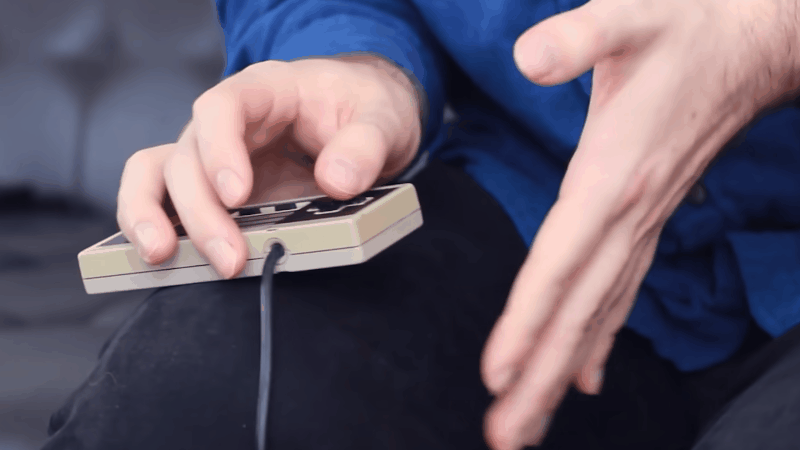What is Classic Tetris?
Tetris is a puzzle video game created by Aleksey Pázhitnov, who was then a worker at the Dorodnitsyn Computer Center of the Soviet Academy of Sciences. The name derives from the union of the Greek prefix tetra (four) and the word tennis, Pázhitnov’s favorite sport. The first version of the game was published on June 6, 1984.
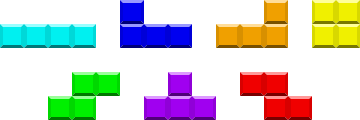
The game is based on tetrominoes, which are pieces composed of four square blocks that fall continuously from the top of the screen. These pieces can be moved horizontally as they fall and can be rotated, but they cannot be prevented from falling. The object of the game is to stack these tetrominoes to fill horizontal lines, which will disappear when completed and cause all the pieces above them to fall, thus preventing the screen from filling up with pieces and ending the game (the dreaded top-out). As we advance in the game, the speed at which the pieces fall will increase.
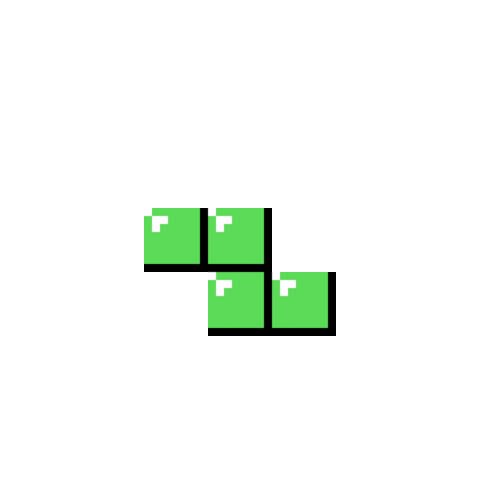
What makes Classic Tetris different from modern Tetris?
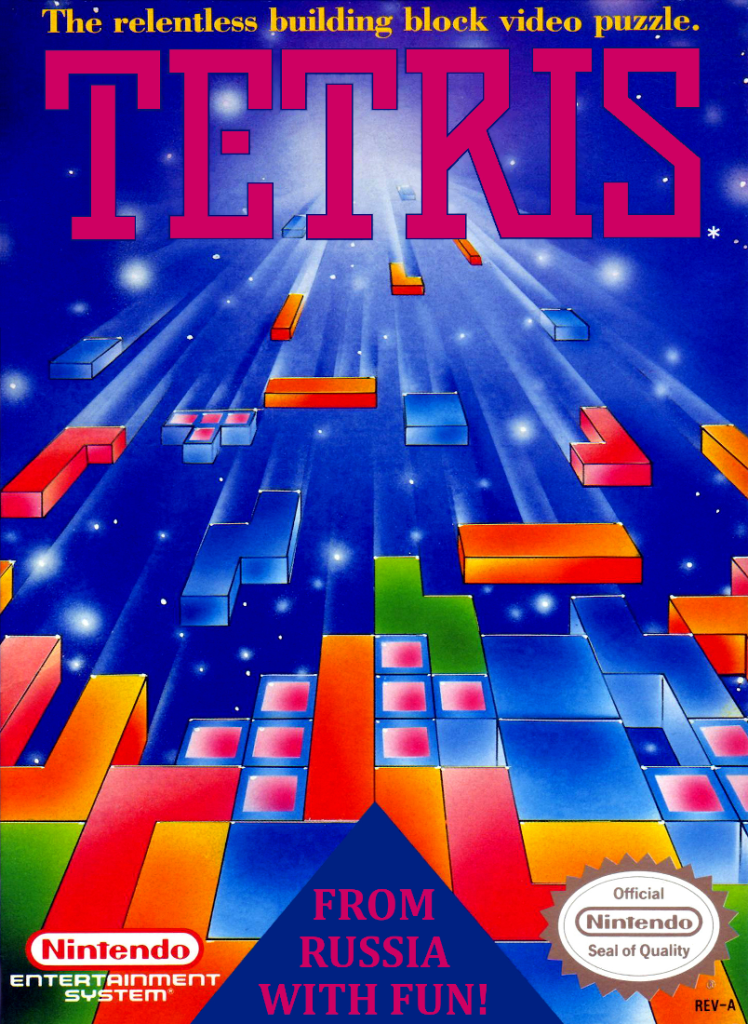
Throughout the existence of Tetris there have been multiple versions of the game, with variations in the mechanics and in the algorithm used for the selection of pieces. Thus, some of the modifications that modern versions may include are:
- Changes in the original algorithm, which was a pseudo-random one with some controls to avoid too many repetitions, by other algorithms called 7-bag (or 14-bag), which simulates the effect of putting the 7 possible tetrominoes (or 14, repeating each one of them) in a bag to take them out randomly, repeating the process when the bag is emptied. This ensures that each piece is repeated at most every 14 pieces, avoiding long droughts.
- Piece preview: while in Classic Tetris we can only know what will be the next piece that is falling at that moment, the most modern Tetris include previews of up to 5 pieces in the future.
- Almost all modern Tetris include a hold function, which allows you to “save” the falling piece for later use.
- Lock delay: this is the time that passes from the moment a piece touches the surface until it is locked and cannot be moved. In Classic Tetris it practically does not exist (it is the equivalent to the time it would take for the piece to descend one position), while in modern versions it is much longer and allows you to rotate the piece, move it and abuse the rotation mechanics, getting it into seemingly impossible holes.
- Changes in the scoring mechanics, prioritizing combos, t-spins and other moves over the achievement of lines, doubles, triples and tetris.
- While in Classic Tetris the matches are decided by who gets a higher score, in more modern Tetris there is a more aggressive approach, with the player trying to make the opponent fill his screen with pieces by sending lines obtained through the above-mentioned combos. In other words, the winner is the one who survives the longest rather than the one who achieves the highest score.
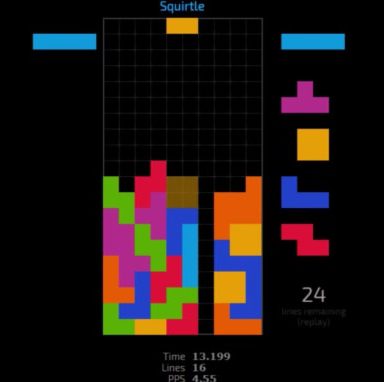
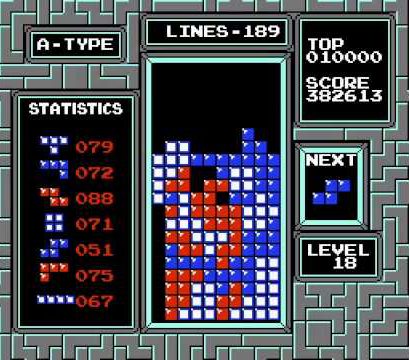
Classic Tetris in the XXI century
Players of Classic Tetris agree that the version that most reflects the original idea of the game is the version released by Nintendo for the NES console in 1989. The problem is that it is a single-player version, without the possibility of competing against an opponent. So… how do we manage to turn a Tetris game into a Tetris match?
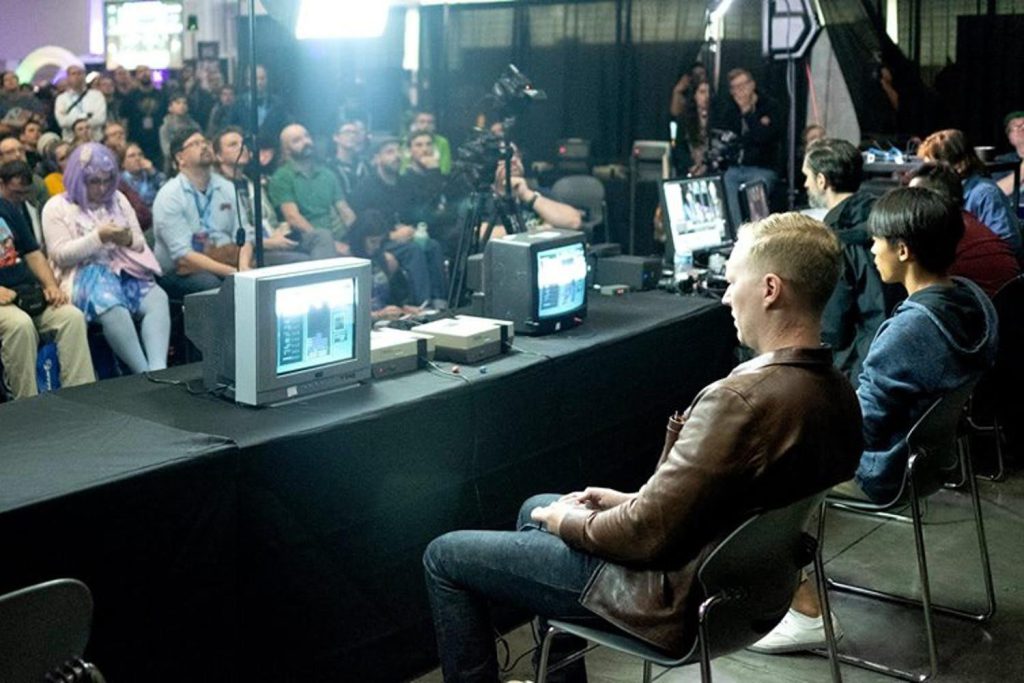
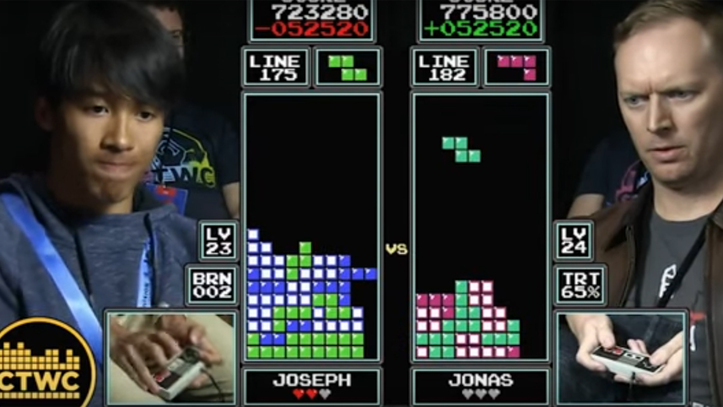
Each player uses a console with a controller, a game and a tube TV (preferably, since the image is generated immediately and there is no delay between the activation of the controller and the response on the screen).
Since the goal in a game of Classic Tetris is to outscore your opponent, you really don’t need more than this. However, in order for the audience to be able to follow the match, the signals produced by the consoles are captured by computer devices to assemble a coherent scene, in which the state of the game for the two participants as well as other useful data, such as the score difference between them, can be seen.
This processed image can then be projected for a live audience and/or broadcast over the Internet, adding commentary on the progress of the game and turning a 30+ year old version of Tetris into a truly modern esport.
NTSC or PAL?
Because there were different television technologies at the time when Tetris for Nintendo was released, there were two versions of it: NTSC, focused on the U.S. market and the rest of the countries that used that television standard, and PAL, intended for the rest of the world markets, including Europe.
For technical reasons that would take a long time to explain, these two versions offer different mechanics in terms of the speed of movement of the pieces and the increase of speed in the levels.
Although there are more and more tournaments that use the PAL version, especially in Europe, the Classic Tetris World Championship uses the NTSC version, and it is the one we also use in the tournaments and events we organize.
Play styles
Due to the particular mechanics of Classic Tetris with respect to the movement of the pieces on the board, players have developed different game modes over time, always seeking to achieve the highest possible score and the greatest competitive advantage. Currently there are three different styles of play:
DAS
Acronym for Delayed Auto Shift. It is the oldest game style.
It consists of taking advantage of the mechanics of horizontal movement of pieces that the game offers: when we press the directional pad to move the piece horizontally, it will immediately move towards the selected direction and, if we hold down that same direction, the piece will stay still for a fraction of a second to begin to move automatically with considerable speed.
It works similar to a computer keyboard when you hold down a letter. With DAS we can make a piece move approximately 10 positions per second (10hz).
There are many tricks to take advantage of this mechanic in the best possible way, but this mode has a clear limitation in faster levels (from 19), where it is very difficult to move the pieces to the left over a certain height. It makes the game impossible from level 29 onwards.
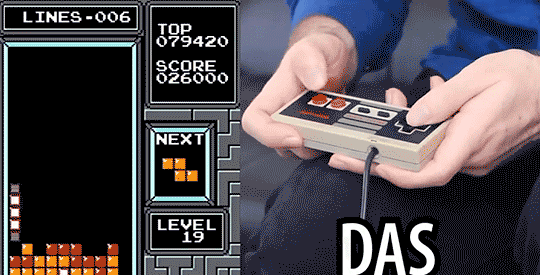
It consists of pressing the directional pad fast enough to overcome the limitations of DAS.
Originally shown by Thor Aackerlund at the 1990 Nintendo World Championship, it was popularized in the modern scene by Japanese player Koryan. In 2018 it became the hegemonic playstyle when Joseph defeated Jonas to win his first world championship.
Great players using hypertapping are able to stay alive at level 29 and beyond, but with some difficulty and without going too far.
It requires great stamina and is very demanding on the position of the hands and joints, and can lead to tendonitis and other injuries in some cases.
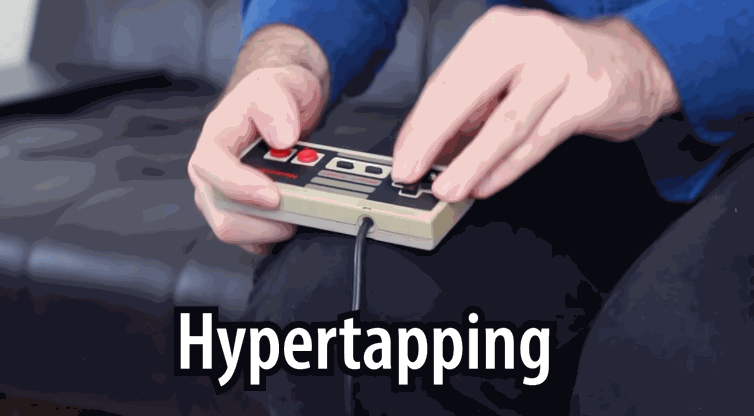
Rolling
A new style of gameplay that has been on the scene for barely two years, but has already managed to surpass the two previous ones in terms of possibilities.
Originally developed by gamer Cheez, it consists of drumming with the fingers of one hand on the back of the controller, so that the directional pad bounces off the thumb of the other hand, allowing much higher piece shifting speeds to be achieved than with hypertapping.
Today, virtually all top-level players use this style of play, which has allowed them to break unsuspected scoring records.
Using rolling you can play well into level 29 and achieve high scores, and you can even virtually not die and reach levels where the game begins to show visual glitches because it was never contemplated during its development the possibility of someone getting that far.
